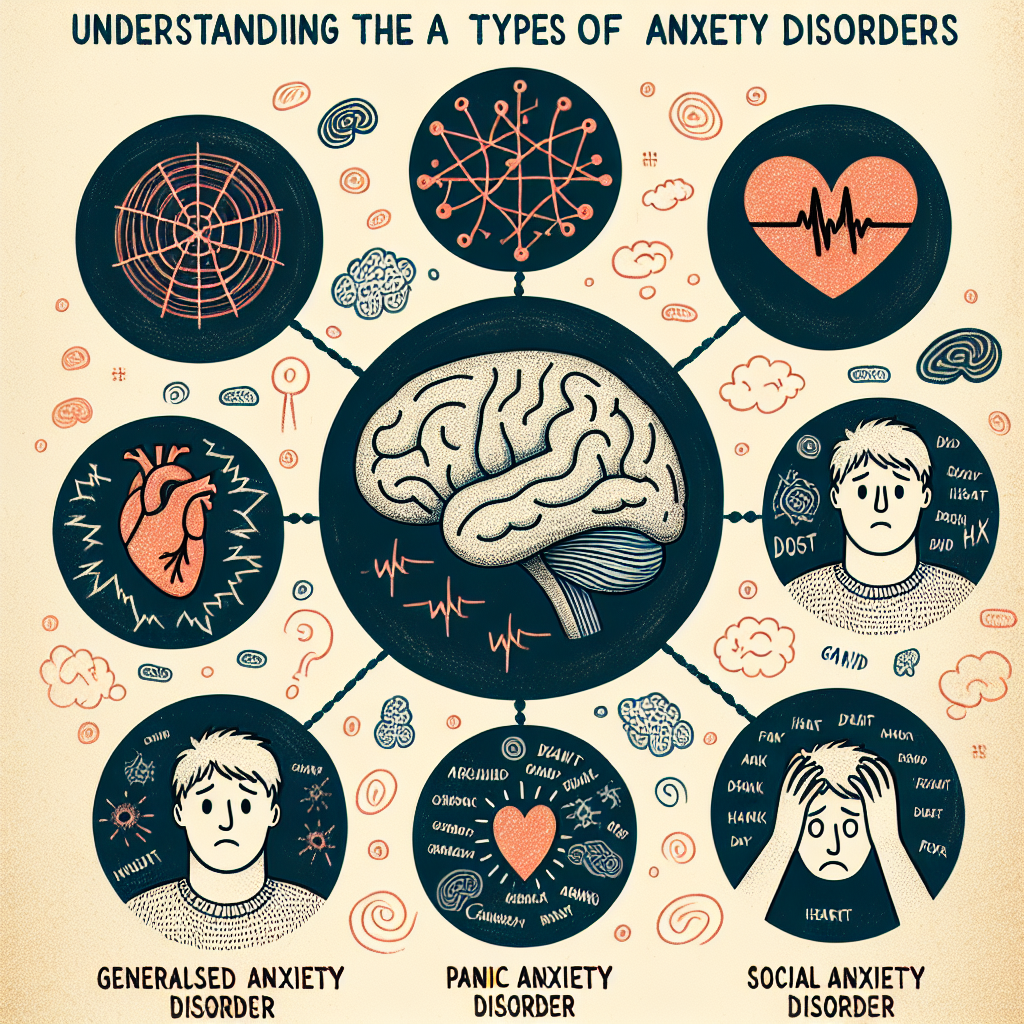Anxiety disorders are the most common mental health disorders worldwide, with 1 in 13 individuals likely to experience an anxiety disorder in their lifetime. These disorders are much more than the occasional nervousness or worrying everyone experiences from time to time. Anxiety disorders can be debilitating, causing significant distress and impairment in one’s daily life. They are categorized into six main types, and this piece aims to illuminate these categories and answer common questions about them.
1. Generalized Anxiety Disorder (GAD)
GAD is characterized by chronic and excessive worry and tension. Individuals with this disorder may worry excessively about everyday issues such as health, money, family, or work. Although they may be aware that their anxiety is more intense than necessary, they may still find it difficult to control their worry.
2. Panic Disorder
Panic disorders are characterized by recurring, spontaneous panic attacks. These attacks, which often last around 10 minutes, involve symptoms such as a pounding heart, sweating, trembling, shortness of breath, and feelings of imminent doom. Those with panic disorders live in fear of having another panic attack and may avoid places where they have had panic attacks in the past.
3. Obsessive-Compulsive Disorder (OCD)
OCD is characterized by patterned obsessions and compulsions. Obsessions are intrusive thoughts that cause anxiety, while compulsions are the repetitive behaviors individuals perform to reduce that anxiety. Example obsessions include fear of germs and contamination, while example compulsions include excessive cleaning and handwashing.
4. Social Anxiety Disorder
Social Anxiety Disorder, also known as social phobia, involves intense fear of social situations where the person expects to feel embarrassed, judged, or fearful of offending others. These situations might include public speaking, meeting new people, or eating in public places. The fear can induce panic attacks and may prompt the individual to avoid social situations entirely.
5. Post-Traumatic Stress Disorder (PTSD)
PTSD can develop after experiencing or witnessing a terrifying event. Symptoms include flashbacks, nightmares, and severe anxiety, all related to the traumatic incident. Individuals may feel on edge and find themselves avoiding reminders of the traumatic event.
6. Specific Phobias
Specific phobias are intense fears about a particular object or situation. These phobias cause individuals to go to great lengths to avoid the object or situation they fear. Some examples include phobias of spiders, heights, or flying.
Conclusion
Understanding the different types of anxiety disorders is crucial for those suffering from these disorders and for the friends, family, and health professionals supporting them. Knowledge about these disorders can help guide appropriate treatments and coping strategies, and it lessens the stigma that often accompanies mental health disorders. Despite their prevalence and impact, anxiety disorders are treatable, and with the right support and treatment, individuals can live fulfilling lives.
FAQs
- 1. Is it possible to have more than one type of anxiety disorder?
- Yes, it is possible. For example, it’s not uncommon for someone with a specific phobia also to have GAD.
- 2. At what age do anxiety disorders typically appear?
- Anxiety disorders can occur at any age, but most begin in childhood, adolescence, or early adulthood.
- 3. Are anxiety disorders associated with other mental health disorders?
- Yes. Many people with an anxiety disorder also have another mental disorder, such as depression or substance use disorder.
- 4. Are anxiety disorders hereditary?
- Scientists believe anxiety disorders result from a combination of genetic and environmental factors. Anxiety disorders can run in families, but not everyone in a family will develop an anxiety disorder.
- 5. How can anxiety disorders be treated?
- Treatment involves a combination of psychotherapy, behavioral therapy, and medication. Lifestyle changes, such as regular physical activity, a healthy diet, and adequate sleep, can also help manage symptoms.

Leave a Reply